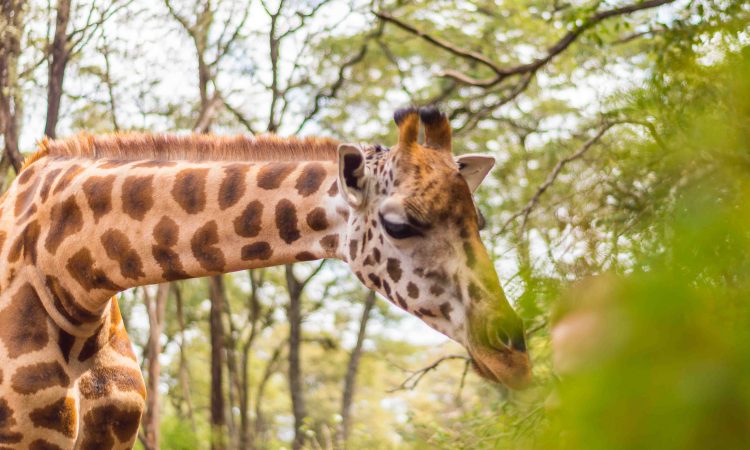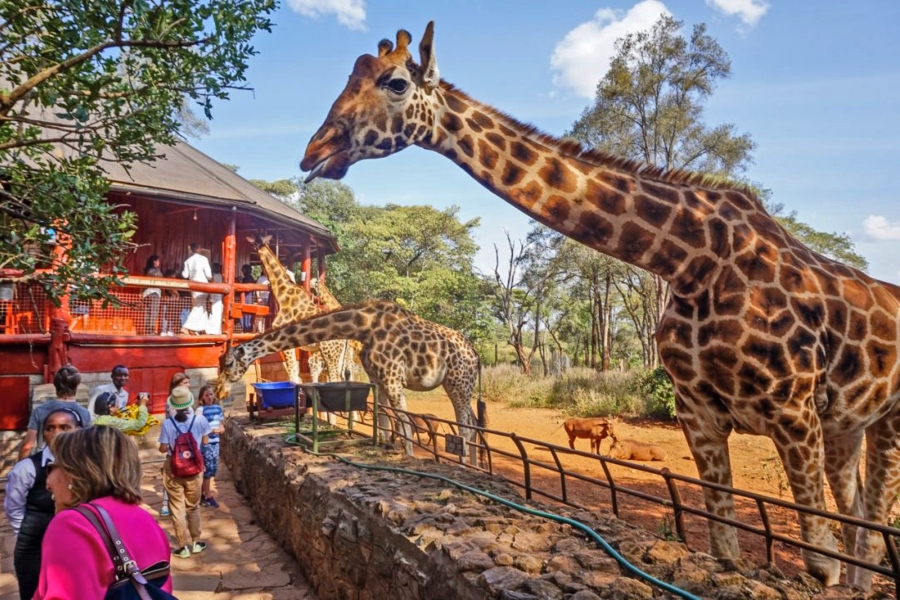Nairobi Giraffe Centre : The Complete Guide : If you’re visiting Nairobi and are passionate about African wildlife, you should schedule some time to go to the city’s renowned Giraffe Center. The center was established and is managed by the African Fund for Endangered Wildlife (AFEW), and it is without a doubt one of Nairobi’s most well-liked attractions. The center, which was initially created as a breeding program for the imperiled Rothschild’s giraffe, gives visitors the chance to interact closely with these magnificent animals.

The Rothschild’s giraffe, also known as the Baringo or Ugandan giraffe, can be distinguished from other subspecies by the absence of markings below the knee and the variety of shape and tone of its spots. They can only be found in the wild in Kenya and Uganda, with Lake Nakuru and Murchison Falls National Parks offering the best chances for sightings. The Giraffe Center is still your best option for a close encounter, though, given how few there are in the wild today.
HISTORY
The Giraffe Center got its start in 1979 when Jock Leslie-Melville, the Kenyan grandson of a Scottish Earl and his wife Betty, established it as a breeding program for Rothschild’s giraffes. The Leslie-Melvilles made the decision to stop the subspecies’ decline after habitat loss in western Kenya brought it dangerously close to extinction. In 1979, there were thought to be only 130 Rothschild’s giraffes left in the wild.
Two captured baby giraffes that the Leslie-Melvilles raised by hand at their residence in Lang’ata, the location of the present center, served as the foundation for their breeding program. Rothschild’s giraffe breeding pairs have been successfully reintroduced over time to a number of Kenyan national parks, including Ruma National Park and Lake Nakuru National Park. The number of wild Rothschild’s giraffes has now increased to about 1,500 as a result of initiatives like this one.
The Leslie-Melvilles finished construction on an environmental education and visitor center in 1983, and it was later that year that it was first made accessible to the general public. The center’s founders hoped to raise public awareness of the plight of the subspecies through this new initiative.
MISSION AND VISION
The Giraffe Center is a nonprofit organization that was founded with the dual goals of giraffe breeding and encouraging conservation education. In order to instill in the next generation the knowledge and respect necessary for people and wildlife to coexist in harmony, the center’s educational initiatives are specifically targeted at Kenyan schoolchildren. The center significantly reduces admission prices for Kenyans in order to pique local interest in the project.
The center also conducts art workshops for neighborhood schoolchildren, the outcomes of which are showcased and offered for sale to visitors in the gift shop. Gift shops, Tea houses, and ticket sales all contribute to the funding of free environmental outings for Nairobi’s underprivileged youth. In this way, going to the Giraffe Center is more than just a good time; it also contributes to the future of conservation in Kenya.

THINGS TO DO
Meeting the giraffes is, of course, the highlight of visiting the Giraffe Center. A raised observation deck over the animals’ natural enclosure offers a distinctive elevated view as well as the opportunity to pet and feed any friendly giraffes. Additionally, the center has an auditorium where visitors can listen to presentations on giraffe conservation and current projects.
It is highly recommended to continue exploring the nearby 95-acre wildlife sanctuary on the center’s 1.5 km/mile Nature Trail afterward. Warthogs, antelope, monkeys, and a veritable abundance of native birdlife can all be seen here. While the Tea House serves light fare with a view of the giraffe enclosure, the gift shop is a great place to stock up on locally made arts and crafts.
PRACTICAL INFORMATION
5 kilometers (3 miles) from Nairobi’s city center is where you’ll find The Giraffe Center. If you’re going alone, you can take the public transportation to get there; a taxi from the center ought to run you about 4,000 KSh. The center is open every day, including weekends and holidays, from 9:00 a.m. to 5:00 p.m.


